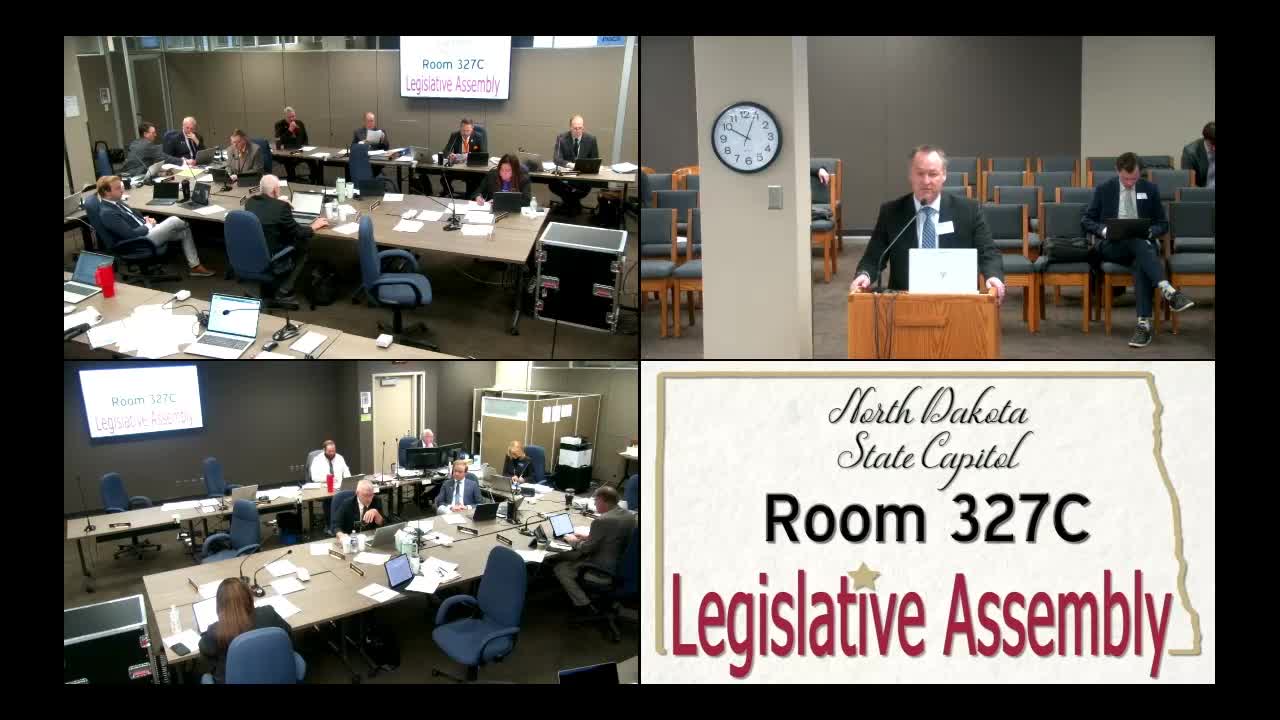North Dakota lawmakers debate impact of 340B drug pricing program on hospital funding
February 18, 2025 | Industry, Business and Labor, House of Representatives, Legislative, North Dakota
This article was created by AI summarizing key points discussed. AI makes mistakes, so for full details and context, please refer to the video of the full meeting. Please report any errors so we can fix them. Report an error »

The North Dakota State Legislature's House Industry, Business and Labor Committee convened on February 18, 2025, to discuss critical issues surrounding the 340B drug pricing program. This program, designed to provide discounts on pharmaceuticals for eligible healthcare providers, has sparked debate regarding the distribution of these savings and their impact on patient care.
During the meeting, Tim Blassell from the North Dakota Hospital Association emphasized that the intent of the 340B program is not to provide direct discounts to patients but to support hospitals in offering charity care and expanding services. He noted that if the program were to be eliminated, it could lead to reduced services and increased healthcare costs in the state.
Representative Koppelman raised concerns about the limited percentage of savings passed on to patients, citing a report indicating that only about 1.4% of the savings from the program reaches needy consumers at the pharmacy level. He questioned the effectiveness of the current structure and sought clarity on proposed amendments to the bill, which aimed to address these issues.
The discussion also highlighted the significant increase in pharmaceutical spending by hospitals, which has reportedly risen by 86% over the past five years. This surge raises questions about the sustainability of the current pricing model and the necessity for reform.
Several committee members expressed their support for amendments that would enhance transparency and ensure that the benefits of the 340B program are more equitably distributed. Representative Ruby articulated a desire to align the program more closely with its original intent, suggesting that the discounts should directly benefit patients rather than being absorbed into broader hospital funding.
As the committee deliberated, it became clear that while there is general support for the bill, there is also a strong call for amendments that would ensure better accountability and transparency in how the savings from the 340B program are utilized. The outcome of these discussions could significantly influence the future of pharmaceutical pricing and patient access to necessary medications in North Dakota.
During the meeting, Tim Blassell from the North Dakota Hospital Association emphasized that the intent of the 340B program is not to provide direct discounts to patients but to support hospitals in offering charity care and expanding services. He noted that if the program were to be eliminated, it could lead to reduced services and increased healthcare costs in the state.
Representative Koppelman raised concerns about the limited percentage of savings passed on to patients, citing a report indicating that only about 1.4% of the savings from the program reaches needy consumers at the pharmacy level. He questioned the effectiveness of the current structure and sought clarity on proposed amendments to the bill, which aimed to address these issues.
The discussion also highlighted the significant increase in pharmaceutical spending by hospitals, which has reportedly risen by 86% over the past five years. This surge raises questions about the sustainability of the current pricing model and the necessity for reform.
Several committee members expressed their support for amendments that would enhance transparency and ensure that the benefits of the 340B program are more equitably distributed. Representative Ruby articulated a desire to align the program more closely with its original intent, suggesting that the discounts should directly benefit patients rather than being absorbed into broader hospital funding.
As the committee deliberated, it became clear that while there is general support for the bill, there is also a strong call for amendments that would ensure better accountability and transparency in how the savings from the 340B program are utilized. The outcome of these discussions could significantly influence the future of pharmaceutical pricing and patient access to necessary medications in North Dakota.
View full meeting
This article is based on a recent meeting—watch the full video and explore the complete transcript for deeper insights into the discussion.
View full meeting
